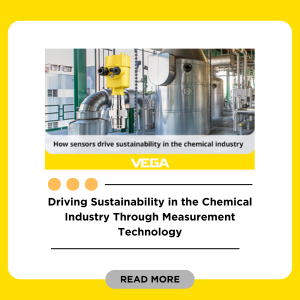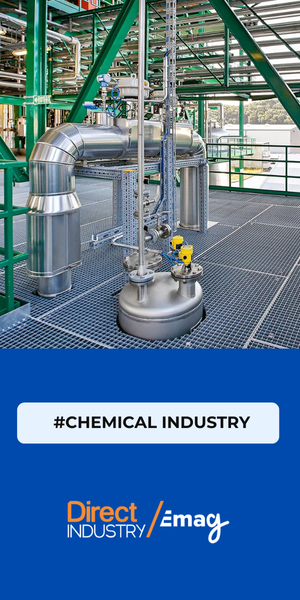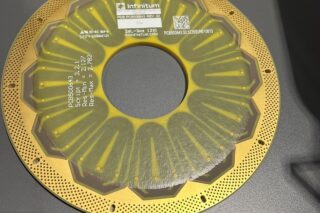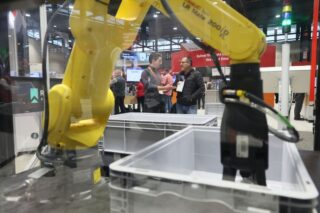With hundreds of MES solutions on the market in 2025, selecting the right one can feel like navigating a complex maze. This guide highlights the essential criteria, practical checks, and comparison points that will help you choose an MES platform delivering real value — from flexibility and user‑experience to long‑term cost efficiency.
With hundreds of Manufacturing Execution System (MES) solutions available in 2025, finding the right one can be overwhelming — especially as the pressure to digitize, automate, and remain competitive keeps rising. Whether you’re a CTO, production manager, or CIO, choosing the wrong MES can slow your operations or cost millions in hidden inefficiencies.
So how do you cut through the noise? Here are 3 essential criteria to help industrial leaders choose the MES platform that delivers both performance and value.
1/ Flexibility and Interoperability: Your MES Should Fit In — Not Take Over
Modern factories are complex ecosystems. You’re likely already working with cloud services, ERP systems (like SAP or Oracle), IoT devices, and legacy machines. Your MES needs to act as a conductor, not a disrupter.
Look for:
- Open APIs and standard connectors
- Cloud-native architecture for scalability and updates
- Low-code or no-code customization to deploy in weeks, not months
2/ User Experience: Simplicity Is Strategic
Your MES may be powerful — but if it’s hard to use, adoption will fail. In 2025, user experience (UX) is a competitive advantage. Think:
- Intuitive dashboards
- Mobile and tablet compatibility
- Clear navigation for both shop-floor operators and IT staff
- Fast onboarding with minimal training
It is also essential to consider the user profile when selecting your production management software. If users are not already familiar with this type of solution, choosing a user-friendly interface becomes a key factor in ensuring high adoption rates and improved productivity. User satisfaction should therefore be a central consideration when making your decision.
Pro Tip: Always ask vendors for a live UX demo before committing.
3/ Total Cost of Ownership (TCO): Look Beyond the License Fee
A MES investment goes way beyond the sticker price. When evaluating cost, factor in:
- Setup and deployment
- Maintenance and upgrades
- Training and support
- Scalability (does the price grow with usage?)
Also, two models stand in contrast when choosing an MES: traditional on-premise solutions and the increasingly popular SaaS (Software as a Service) options.
The first model involves purchasing a license from a software vendor and managing the system entirely in-house. This requires the company to have the necessary internal expertise to maintain, host, and operate the chosen software.
In contrast, the SaaS MES model is more like renting the software, with the system being used via a subscription paid to the vendor. The total cost is easier to calculate, based on factors such as usage load, number of users, or performance indicators (e.g., revenue generated).
For SMEs, the second option is often the most attractive, as the Total Cost of Ownership (TCO) is simpler to assess. It also enables better budget control while benefiting from vendor support and regular updates that reduce the risk of issues or software obsolescence. But for some large manufacturers, on-premise solutions still offer more control and data sovereignty.
MES Solutions – Quick Comparison 2025
| MES Platform | Strengths | Deployment | Ideal For |
|---|---|---|---|
| AVEVA MES | Full-featured, strong integration | On-prem / Cloud | Complex environments |
| FactoryLogix (Aegis) | Fast deployment, intuitive UX | SaaS / Hybrid | Mid-size manufacturers |
| PINpoint V5 MES | Global process visibility | On-prem | Large-scale operations |
| Prodsmart | Easy to use, mobile-first | SaaS | SMEs, agile production |
| Rockwell FactoryTalk | Native automation integration, strong quality & compliance | On-prem / Hybrid | Automotive, life sciences, FMCG |
| Tulip | No-code/low-code builder, IoT-ready, highly customizable | SaaS / Edge | High-mix, fast-paced manufacturers |
| Siemens Opcenter | Deep integration with Siemens ecosystem, industry-specific templates | On-prem / Cloud / SaaS | Regulated industries, discrete manufacturing |
| Epicor Advanced MES | Real-time data, strong SPC, visual factory dashboards | On-prem / Cloud | Electronics, aerospace, medical devices |
| Honeywell Connected Plant | Strong KPI monitoring, quality control, scalable to enterprise environments | On-prem / Cloud | Large industrial and process manufacturers |
Frequently Asked Questions
What makes flexibility and interoperability critical when selecting an MES?
A modern factory already relies on multiple systems — ERP, IoT, legacy machines — and the MES must integrate seamlessly to avoid disruption. Open APIs, standard connectors and cloud‑native architecture ensure the system can adapt as the plant evolves. :contentReference[oaicite:3]{index=3}
How important is user experience (UX) for MES adoption?
A powerful MES is useless if operators and staff can’t use it efficiently. Intuitive dashboards, mobile/tablet support, and minimal training are essential — otherwise, resistance and low adoption rates can compromise value. :contentReference[oaicite:4]{index=4}
How to estimate the true cost of a MES beyond licensing fees?
Include deployment, customization, maintenance, support, updates, training and scalability when calculating TCO. SaaS models often offer lower upfront costs and simpler budget planning — but on‑premise can give better control for large enterprises. :contentReference[oaicite:5]{index=5}
Can small or medium manufacturers benefit from MES?
Yes — many modern MES platforms offer SaaS, mobile-first, scalable and pay‑as‑you‑go models suitable for SMEs, enabling access to real-time data, quality tracking, and production visibility without heavy upfront investment. :contentReference[oaicite:6]{index=6}
Checklist: What to verify before selecting an MES
- Confirm interoperability with existing ERP, IoT, machines & legacy systems (open APIs, connectors)
- Choose based on deployment model: Cloud / SaaS vs On‑prem — match with your IT infrastructure and budget
- Ensure intuitive user interface and mobile/tablet compatibility for shop-floor and office users
- Evaluate license cost, maintenance, training and upgrade expenses to estimate real total cost of ownership (TCO)
- Check vendor’s after‑sales support, update policy and scalability for future growth
- Verify MES features: real-time data collection, quality control, traceability, production tracking, analytics dashboards
- Assess ease and timeline of deployment — low-code / no-code customization can accelerate rollout
- Confirm compliance with industry standards and data security / governance requirements





![Image [BUYING GUIDE] How to Choose the Right Industrial Robot?](/wp-content/uploads/sites/3/Industrial-Robot-320x213.jpg)

![Image [Buying Guide] How to Choose the Right Safety Shoes?](/wp-content/uploads/sites/3/Safety-Shoes-320x213.jpg)


![Image [Buying Guide] How to Choose the Right AMR?](/wp-content/uploads/sites/3/AMR-320x213.jpg)